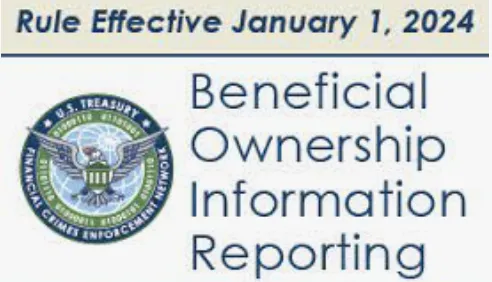Introduction
Did you know that the IRC Section 1202 exclusion for gain on qualified small business stock (QSBS) has been around for decades? The partial or total exclusion of gain is intended to encourage investors to invest in startups and small businesses despite the risks involved. If you meet all the requirements, QSBS can save you a lot of money. Thus, it is critical to thoroughly understand the requirements that issuing corporations and shareholders must meet to maximize the benefits under Section 1202.
Key Takeaways
- The QSBS exclusion is available for stock issued to qualified shareholders after August 10, 1993.
- Depending on the stock’s purchase date, Section 1202 permits qualified shareholders to exclude a portion or all of the gain from the sale of Qualified Small Business Stock.
- The taxpayer may claim a maximum gain exclusion of ten million dollars or ten times the aggregate adjusted basis of the stock at the time of issuance.
- By utilizing Section 1202, taxpayers have the opportunity to reduce their federal income taxes by as much as 23.8%.
- Investors who sell their Qualified Small Business Stock before the required holding period can defer capital gains by reinvesting the proceeds in the replacement QSBS.
What is Considered Qualified Small Business Stock (QSBS)?
Any shares issued by a qualified small business (QSB) after August 10, 1993—the day the Revenue Reconciliation Act of 1993 was passed—are referred to as QSBS.
Which Businesses Qualify as Qualified Small Businesses (QSB)?
Not all small businesses are qualified small businesses under the code. A QSB is any active domestic C-corporation with gross assets not exceeding $50 million on the day the stock is issued and immediately after issuance. Moreover, to be considered a QSB, a minimum of eighty percent of the company’s assets must be utilized in the conduct of qualified businesses or trades. The C-corporation must have issued the stock directly to the shareholder after August 10, 1993.
What are the Tax Benefits of QSBS?
The primary benefit of being classified as a qualified small business is the potential exclusion or reduction of capital gains tax when selling or exchanging Qualified Small Business Stock. Under Section 1202, if you meet the criteria and hold QSBS for the required period, you may be eligible for a partial or complete exclusion of capital gains realized from the sale of the QSBS. These tax benefits incentivize investment in small businesses and promote economic growth. The following are the main tax advantages of QSBS:
- Capital Gains Exclusions. Capital gains on the sale of Qualified Small Business Stock may be excluded up to 100%, depending on the date of acquisition, provided the gains do not exceed the maximum limit and all the eligibility requirements are met.
- Rollover Provision. You may roll over and postpone paying taxes on gains by reinvesting in other QSBS within 60 days of the sale date, provided that you held the shares for over six months.
- Transferability of Exclusions. QSBS tax advantages can be passed down through gifts or bequests.
- Exemption from 3.8% NIIT of Excluded Capital Gains. Excluded capital gains (from the sale of QSBS) are also exempt from the 3.8% NIIT.
- State Tax Breaks. Several states follow federal QSBS rules and offer comparable tax benefits (gain exclusions).
What is QSBS Gain (Section 1202) Exclusion?
The Qualified Small Business Stock gain exclusion under Internal Revenue Code (IRC) Section 1202 is a tax benefit available to taxpayers other than corporations that allows you to deduct up to 100% of the gain on the sale of stocks acquired from QSB from your gross income if you meet specific requirements. It is a federal tax break that may be extended to the state level.
When qualified shareholders sell their QSBS, they can deduct up to 100% of their capital gains under IRC Section 1202. Stocks acquired after August 10, 1993, and kept for a period exceeding five years are eligible for the gain exclusion. According to IRC Section 1202(b)(1), the amount of gains from the sale of QSBS that can be excluded for the taxable year is capped at the greater of $10 million, or 10x the aggregate adjusted basis of the stock’s value. These limitations apply on a per-shareholder and per-issuer basis.
Distinctions between the two limitations. The $10 million is an aggregate limitation and includes eligible gains from previous years. In contrast, the 10-times-basis limitation is annual and does not consider eligible gains from earlier years.
What Does the Term “Adjusted Basis” Actually Mean?
The “adjusted basis” is the change in a stock’s initial cost after acquisition. For tax purposes, update the purchase cost to reflect changes in stock value to determine the gain or loss on the sale of QSBS. The stock’s adjusted basis is deducted from the selling price to determine the capital gain. Stock dividends and stock splits, for example, can cause the cost of a stock to change. Cash dividends do not affect the adjusted basis (or original cost).
Percentage of Exclusion. Depending on when you obtained your Qualified Small Business Stock, your gain exclusion may vary.
- For QSBS you acquired between August 11, 1993, and February 17, 2009, the exclusion you may claim is 50% of the capital gains on the sale of your QSBS.
- For QSBS you acquired between February 18, 2009, and September 27, 2010, you may claim a gain exclusion of 75% on capital gains on your QSBS sale.
- For QSBS acquired after September 27, 2010: 100% exempt from capital gains tax, 3.8% NIIT, and 7% AMT, provided that the QSBS gains do not exceed the exclusion maximum limit.
| Acquisition Date | % Gain Exclusion (Sec. 1202) | Tax Rate on Non-Excluded Gains | Alternative Minimum Tax (AMT) |
| Between August 11, 1993 and February 17, 2009. | 50% | 28% capital gains tax plus 3.8% NIIT | For AMT purposes, 7% of the excluded gain is considered a tax preference item. |
| Between February 18, 2009 and September 27, 2010 | 75% | 28% capital gains tax plus NIIT of 3.8% | 7% of the excluded gain is treated as an AMT preference item. |
| 09/28/2010 to Present | 100% | No capital gains tax, no NIIT, provided the QSBS gains do not exceed the exclusion cap | Excluded from AMT |
Notes:
- The gain not excluded under IRC Section 1202 is subject to 28% capital gains tax plus 3.8% net investment income tax (NIIT). It will also be included in income for AMT purposes.
- Capital gains taxes are divided into two types: long-term and short-term.
- Tax on long-term capital gains. Your capital gains may be taxed at 0%, 15%, or 20% if you hold the stock for over a year but less than five years. The exact rate will depend on your taxable income and filing status.
- Tax on short-term capital gains. If you hold the stock for less than a year, the gain is a short-term capital gain subject to ordinary income tax. As a result, short-term capital gains rates could reach 37%.
What Are the Eligibility Requirements for QSBS Gain Exclusion Under IRC Section 1202?
To claim the tax benefits provided in Section 1202, both the issuing company and the shareholders must meet all of the following requirements:
- Eligibility Requirements for the Issuing Company
The company must meet the following conditions to qualify as a small business:
- It has to be a domestic C-corporation.
- The stock must have been issued for the first time after August 10, 1993, and acquired by the shareholder on original issuance in exchange for money, property (excluding stocks), or services rendered.
- The gross assets of C-corporation cannot be more than $50 million before and immediately after the issuance of QSBS.
- The corporation had to pass the active business test. If the two conditions listed below are satisfied, a corporation is considered to have passed this test.
- It is an eligible corporation. Any domestic C-corporation is eligible, except the following:
- An existing Domestic International Sales Corporation (DISC) or a corporation that was formerly a DISC
- A regulated investment company (RIC)
- A real estate investment trust (REIT).
- A real estate mortgage investment conduit (REMIC).
- Certain Financial Asset Securitization Investment Trusts (FASITs)
- A cooperative.
- The C-corporation uses at least 80% of its assets to pursue “qualified” trades or businesses actively. Qualified business includes any trade or business except the following:
- Any trade or business that provides services in the following areas: performing arts, brokerage, actuarial, engineering, architecture, health, financial services, consulting, and the like.
- Any other trade or business whose primary asset is the skill or reputation of one or more of its employees.
- Businesses like banking, lending, investing, insurance, financing, leasing, etc.
- Any farming business, including those that cultivate or harvest trees.
- Any company involved in the extraction or production of goods (such as oil drilling, mining, or other extraction-related activities) for which a percentage depletion claim can be made.
- Business that runs hotels, motels, restaurants, etc.
Notes:
- Furthermore, a corporation may hold only up to 10% of its assets in real estate not actively used in a qualified trade or business.
- The corporation fails the active business test if 10% or more of its net assets are made up of stocks or securities in other corporations in which it does not own a majority interest (50% or more).
- Eligibility Requirements for Shareholders
- The shareholder must be a non-corporate entity such as an individual, trust, or estate. If the additional requirements are met, a partnership may be considered an eligible shareholder.
- The shareholder must have acquired the stock after August 10, 1993, at its “original issue” from the corporation. Stock cannot be obtained from another shareholder or a secondary market. However, stock received as a gift or bequest is eligible if the transferor acquired it at its original issuance.
- You must have held the stock for over five years, with the counting period typically commencing from the issuance date. When issued with stock options, warrants, or debt conversions, the holding period begins when the option is exercised or the debt is converted. In the case of an inheritance or gift, you may benefit from the previous owner’s holding period, as the holding period can be “tacked.”
Are Options, Warrants, and Convertible Debt Eligible For the Gain Exclusion?
The instruments themselves do not qualify on their own, but they may become eligible for the exclusion when exercised or converted to original issue stock (Section 1202(f)). The commencement of the 5-year holding period occurs on the conversion or exercise date as specified in Section 1202(f)(2).
How Should I Report Section 1202 QSBS Gain on My Tax Return?
First, report the sale or exchange of the Qualified Small Business Stock on Form 8949. Then, compute the total gain (or loss) from QSBS transactions reported on Form 8949. Report the total gain and exclusion on Schedule D of Form 1040. For detailed instructions and additional requirements for reporting your gain or loss, refer to the Instructions for Schedule (Form 1040). Depending on the surrounding circumstances, other forms may be required, such as
- Form 6251, Alternative Minimum Tax Individuals (applicable if your QSBS was acquired before September 28, 2010).
- Form 6252, Installment Sale Income. Use this form to report gains from an installment sale of QSBS, which should also be reported on Schedule D, line 11.
- Form 8960, Net Investment Income Tax Individuals, Estates, and Trusts (if a portion of the gain is not excludable).
Do States in the United States Follow the Federal Gain-Exclusion Rule?
Each state has its own set of regulations governing the taxation of QSBS gains. Some states follow the federal QSBS rule on gain exclusion and provide an exemption from state income taxes for QSBS gains, whereas others, such as California, New Jersey, and Alabama, do not. You may be eligible for state-level exclusion, depending on your state (not the state the company is incorporated in). Always check the state rules on QSBS gain exclusion to ensure compliance, as they may change.
What is a Capital Gain Rollover?
A capital gain rollover refers to the deferral of capital gains tax by reinvesting the sales proceeds of QSBS (which must have been owned for more than six months) into another QSBS within sixty days of the sale. The tax is deferred until the replacement QSBS is sold. The deferral does not eliminate your tax liability; it simply delays it, allowing you to take advantage of the time value of money and capital gain exclusion when you sell the replacement QSBS.
As per Section 1045, “gain from such sale shall be recognized only to the extent that the amount realized on such sale exceeds (1) the cost of any QSBS purchased by the taxpayer during the 60-day period beginning on the date of such sale, reduced by (2) any portion of such cost previously taken into account under this section.”
Background on the IRC Section 1045 Rollover Provision: Like Section 1202, Section 1045 applies only to QSBS. Under the Taxpayer Relief Act of 1997, Section 1045 was added to the IRS, which made it possible for taxpayers to take advantage of the capital gain rollover. Gains can be rolled over with a “tacked-on” holding period for QSBS sales made after August 5, 1997.
Election Timetable. You have until the filing deadline (including extension) for your tax return to elect to roll over gains from the QSBS sale.
Election Procedure. Here are the steps to making a rollover election:
- On Schedule D of your tax return, enter the total gain from the sale of QSBS.
- Write “Section 1045 rollover” right below the line that reports the gain.
- Enter the amount of deferred gain under Section 1045.
Election Scope. If you qualify for more than one QSBS sale in a given tax year, you can select and make an election for any of them.
Revocation of the Election. To nullify the election, you must obtain prior written consent from the IRS by submitting a formal request for a private letter ruling.
Shortened Holding Period. Typically, the holding period begins the day following the exchange; however, in the case of the QSBS replacement, the holding period is integrated into the original QSBS instead of starting over with five years. Consequently, the next QSBS holding period is reduced.
How Do I Report a Section 1045 Gain Rollover on My Tax Return?
Reporting rollover gain is similar to reporting Section 1202 QSBS gain exclusion on Form 8949, but instead of using code “Q,” use code “R” in column (f) of the form. In column (g), input the deferred gain as a negative value. Subsequently, transfer the details from Form 8949 onto Schedule D, placing them either in Part I or II based on whether the original QSBS was categorized as long-term or short-term.
Difference Between Sections 1045 and 1202
- Section 1202 allows for the exclusion of gains, while Section 1045 allows tax deferral.
- It is possible for QSBS shareholders who cannot benefit from Section 1202 to take advantage of the benefits offered by Section 1045.
- To qualify for gain rollover under Section 1045, you must have held the QSBS for more than six months, while to be eligible for gain exclusion under Section 1202, you must have owned the QSBS for more than five years.
Common QSBS Pitfalls
- Many small business owners are unaware of the Section 1202 gain exclusion or have not considered how to maximize its tax benefits.
- Redemption transactions not considered de minimis may render the company’s stock ineligible for QSBS.
- Some people put off exercising their stock options because they believe the holding period begins when the options are granted.
- QSBS shareholders fail to roll over their sales proceeds within the given timeframe, missing the opportunity to reinvest in replacement QSBS and forfeiting Section 1202 tax benefits.
QSBS Investor Drawbacks
- Requires more than five years of investment.
- Investments in startups are risky.
- If the holding period is not met, QSBS sales have no gain exclusion. However, taxpayers can roll over QSBS sales proceeds into other QSBS within 60 days of the sale.
- A merger can disqualify a company from issuing QSBS.
- QSBS holding period, percentage of gain exclusion, and rules may change due to legislation.
Have More Questions on QSBS Gain Exclusion?
Cleer Tax has you covered! If you have further questions about Section 1202 QSBS gain exclusion and Section 1065 rollover, book a consultation or contact our customer success team. Our tax professionals can provide expert advice on how to keep your company eligible to issue QSBS so that your shareholders can maximize the tax benefits provided by Sections 1202 and 1405.
Cleer provides Corporate Income Tax Packages encompassing federal and state income tax filings for a hassle-free experience. We also offer all-inclusive bookkeeping packages, which include your monthly statements plus your federal and state tax returns.







